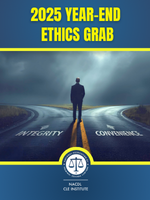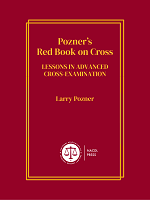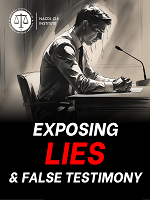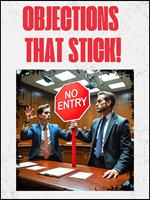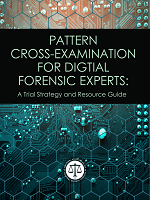jump to Fourth Circuit information
State Information
In February 2020, the National Association of Criminal Defense Lawyers asked its membership about how it communicated with clients in custody. The survey focused particularly on lawyers’ ability to communicate with their detained and incarcerated clients. The below data is focused on findings regarding confidentiality, a key requirement of attorney-client communication.
Facility |
Phone |
Video |
|
In-PersonWant to submit a correction or additional information about facilities you visit? Tell us in this form. |
|---|---|---|---|---|
| Al Cannon Detention Center |
|
|
|
|
| Sheriff Al Cannon Detention Center |
|
|
|
|
| Darlington County Jail |
|
|
|
|
| Florence County Detention Center |
|
|
|
|
| Lexington County Detention Center |
|
|
|
|
| Lieber |
|
|
|
|
| SC Department of Corrections |
|
|
|
|
Federal Information
The prominent Supreme Court case, Weatherford v. Bursey, was appealed from the Fourth Circuit. In Weatherford, The Supreme Court rejected the Fourth Circuit’s initial analysis that “whenever the prosecution knowingly arranges or permits intrusion into the attorney-client relationship the right to counsel is sufficiently endangered to require reversal and a new trial.”{1} 1 Bursey v. Weatherford, 528 F.2d 483, 486 (4th Cir. 1975), rev'd, 429 U.S. 545, 97 S. Ct. 837, 51 L. Ed. 2d 30 (1977). In that same case (reversed by the Supreme Court), the Fourth Circuit explicitly held that prejudice was not a necessary showing to find a constitutional violation.{2} 2 Id.; See also, e.g., United States v. Chavez, 902 F.2d 259, 266 (4th Cir.1990) (prejudice showing required even where a government agent had intruded into the attorney-client relationship by speaking to the defendant without his counsel). However, since Weatherford was decided, the Fourth Circuit has rejected a per se rule of a constitutional violation when the State has intruded into the attorney-client relationship.{3} 3 See, e.g., United States v. Brugman, 655 F.2d 540, 546 (4th Cir. 1981) (holding that there are four factors that courts should consider “whether there has been an invasion such as to be violative of the Sixth Amendment right to effective assistance of counsel”). Brugman established four factors that must be considered when deciding when a constitutional violation has occurred:
(1) whether the presence of the informant was purposely caused by the government in order to garner confidential, privileged information, or whether the presence of the informant was a result of other inadvertent occurrences; (2) whether the government obtained, directly or indirectly, any evidence which was used at trial as a result of the informant's intrusion; (3) whether any other information gained by the informant's intrusion was used in any other manner to the substantial detriment of the defendant; and finally, (4) whether the details about trial preparation were learned by the government.{4} 4 Id. In Brugman, the fourth circuit held that the appellants had not established a constitutional violation because they could not show that the four factors were met. Id. Namely, the government did not elicit or induce the informant’s questions, the informant knew most of the information from his own knowledge of the defendants, the information was not prejudicial to the defendant, and no trial strategy was learned by the government.Id.
Subsequent cases, like United States v. Elbaz, use the four-factor test to answer both the question of an improper governmental intrusion and prejudice.{5} 5 United States v. Elbaz, 396 F. Supp. 3d 583, 592 (D. Md. 2019) (describing the four factors and separately noting that prejudice is required, citing different case law). However, later in the analysis it is clear that the third Brugman factor—information used to the substantial detriment of the defendant— and the prejudice analysis are extremely similar, if not the same. Id. at 595. Lastly, advocates should note that this case offers an extensive analysis of how the Fourth Circuit applies the prejudice analysis. See id. At 591–93. In Elbaz, the court considered whether the government’s possession of attorney-client emails on their internal database constituted a Sixth Amendment violation.{6} 6 Id. The court specifically noted the process for the government’s filter team, and noted how many emails had been accessed.{7} 7 Id. The court also noted the showings that both parties made on whether that information had been used later. Thus, the court concluded the defendant had not been prejudiced.{8} 8 Id. at 594–95.
As in other circuits, even improper recordings of attorney-client conversations do not raise to a constitutional violation without such prejudice.{9} 9 United States v. Jenkins, 178 F.3d 1287 (4th Cir. 1999) (holding that because the defendant could not show that the government’s evidence derived from the suppressed improper video). In this case, the communications that were accessed were a video of the client and his attorney. Id. Simply showing that the prosecutor was in the possession of confidential communications is not enough.{10} 10 Elbaz, 496 F. Supp at 593. This is true even when the communications in possession of the government contain defense trial strategy.{11} 11 Id. (citing United States v. Allen, 491 F.3d 178, 192 (4th Cir. 2007)).
Inadvertent recording, monitoring, or overhearing of attorney-client conversations does not appear to be sufficient to establish a constitutional violation.{12} 12 See Lopez v. Robinson, 914 F.2d 486, 494 (4th Cir. 1990) (holding that the constitutional violation would have access to the courts). Lastly, other constitutional claims—like a Fourth Amendment right to privacy—have largely failed.{13} 13 See, e.g., Bomber v. Clarke, No. 7:16CV00171, 2017 WL 1031280, at *6 (W.D. Va. Mar. 15, 2017) (“Bomber did not have a reasonable expectation of privacy in his telephone conversations while in custody at the Roanoke County/Salem Jail because he was notified that all calls were recorded from the jail.”).



